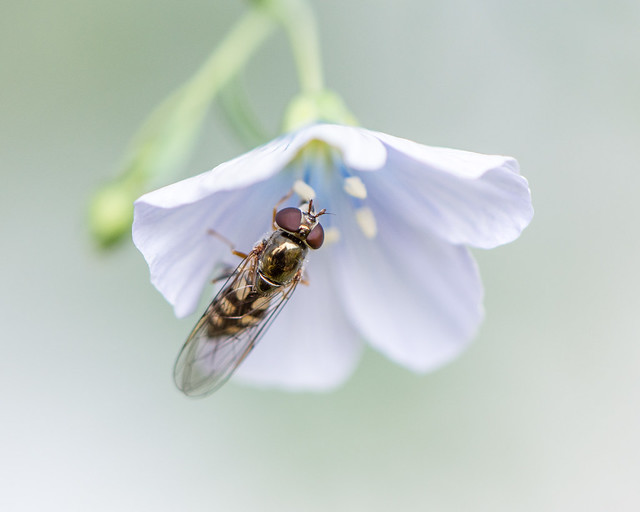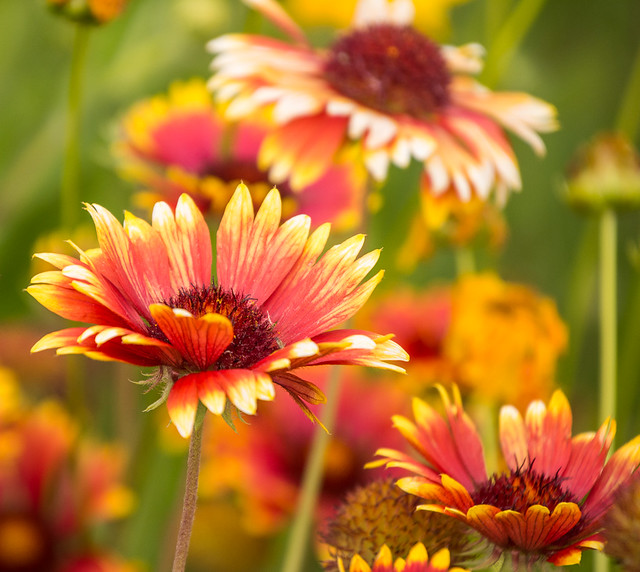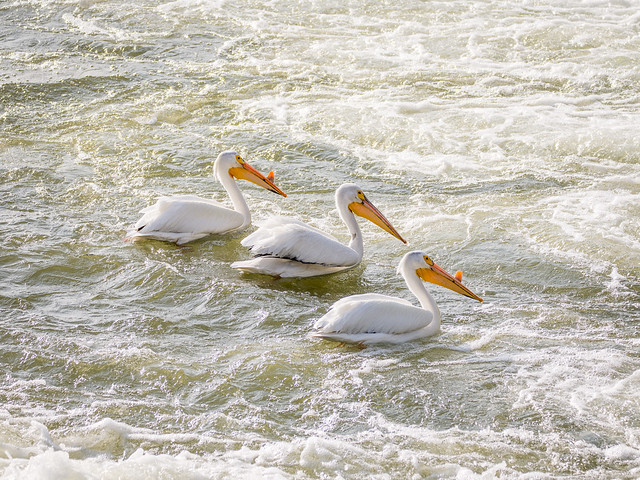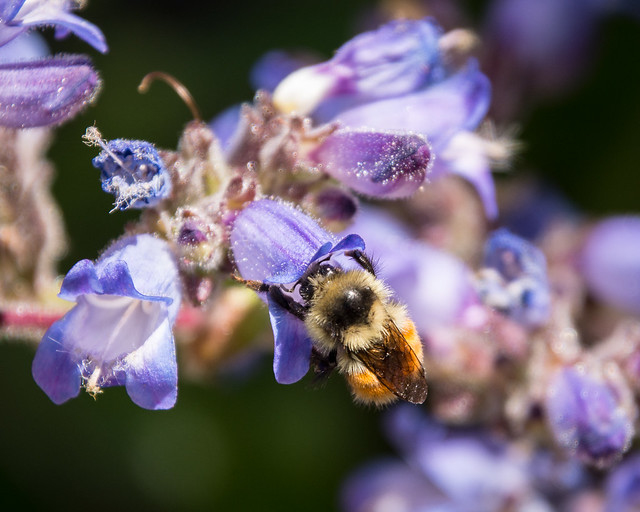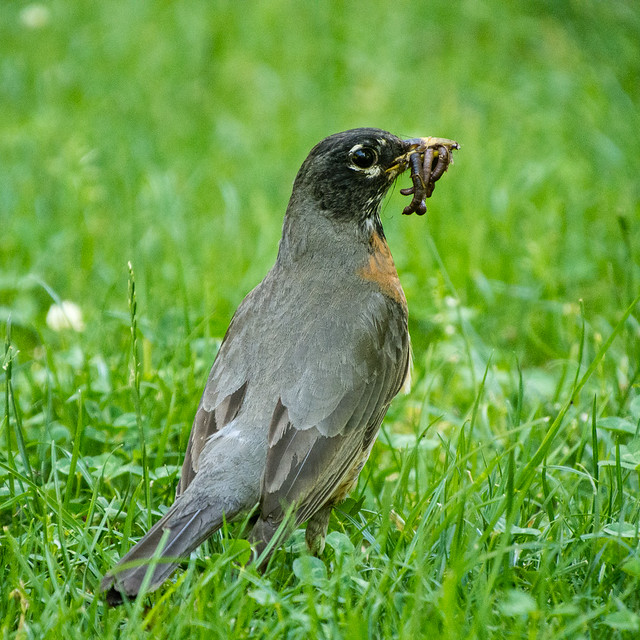Tuesday 28 June 2016
EcoSask News, June 28, 2016
Coming Soon
Keep Meewasin Vital, June 29 (Saskatoon)
Find out how you can support Meewasin Valley Authority as it goes through a provincial funding review at 10 am, June 29, Gabriel Dumont Park.
Marsh Discovery Walk, July 2 (SK)
Join the Fort Qu’Appelle Nature Society on a marsh discovery walk, 9-10:30 am, July 2.
Afforestation Area Clean-Up, July 9 (Saskatoon)
The Richard St. Barbe Baker Afforestation Area is holding a community clean-up on Saturday, July 9, from 8 am to 1 pm. Meet at the South West Off Leash Dog Park on Cedar Villa Road. (supported by an EcoFriendly Action Grant)
Wind & Solar Project Open House, July 11 (Swift Current)
SaskWind and MiEnergy are announcing a multi-million dollar community wind and solar project in Swift Current at 7 pm, July 11.
Science of Soil Workshop, July 13 (Saskatoon)
Vanessa Young, U of S horticulturalist, will discuss soil types, fertility, microbes, erosion, and more from 6-7:30 pm, July 13, at the Saskatoon Food Bank’s Garden Patch.
Upcoming Events
Botrychium Workshop, July 14-15 (SK)
The Native Plant Society of Saskatchewan is offering an in-depth workshop for keen botanists on Moonworts (Botrychium) on July 14-15 in Cypress Hills Interprovincial Park.
Composting Workshops
Saskatoon’s Compost Coaches are offering a free hour-long workshop on different composting options, including trench composting, mulching, vermicompost, and bokashi fermentation at 7 pm, July 14, at the Cliff Wright Library. Or you can build a compost tumbler at 6 pm, July 20, or a vermicomposting bin at 10 am, July 23, at the Saskatoon Food Bank’s Garden Patch.
Rammed Earth Home Permablitz, July 16 (SK)
Join the Prince Albert Parkland Permaculture Guild on July 16 to help build a rammed earth home near Christopher Lake.
A full list of upcoming events can be found on the EcoFriendly Sask Calendar
Harvest Unwanted Fruit
Do you have fruit trees with an over abundance of fruit? Get help with harvesting and share unwanted fruit with others so it doesn’t go to waste. Register your fruit tree online with Out of Your Tree.
EcoSask News is a weekly round-up of local news and events. Email us if you have items you would like us to include.
You can follow EcoFriendly Sask by liking us on Facebook, following us on Twitter, or by email (top right corner).
Labels:
Energy,
Housing,
Meewasin,
Native Plants,
Parks,
Permaculture,
Regina,
Saskatchewan,
Saskatoon,
Solar,
Waste,
Wind
Tuesday 21 June 2016
EcoSask News, June 21, 2016
Coming Soon
Bike Valet Volunteers, June 22 (Saskatoon)
Come find out about upcoming Bike Valet events and sign up as a volunteer from 7-9 pm, June 22, at The Karma – Conscious Café & Eatery. Email cyclingeventsyxe@gmail.com for more info or to RSVP.
Invasive Plant ID Day, June 22 (Moose Jaw)
The Moose Jaw River Watershed Stewards are hosting an Invasive Plant ID Day on June 22 in Moose Jaw.
SaskOutdoors Interpretive Road Trip, July 1-10 (SK)
SaskOutdoors will be visiting 4 provincial parks this summer with a variety of activities: early morning bird walks, pond dipping, photography hikes, campfire building and tarp setting workshops.
Cypress Hills – July 1-3
Great Blue Heron – July 4-6
Narrow Hills – July 7-8
Greenwater Lake – July 9-10
Species at Risk Farm Program, July 6 (webinar)
Tracy Hansen, Simply Ag, will be talking about the SK Species at Risk Farm Program: Habitat Protection and Enhancement in a July 6 webinar sponsored by PCAP-SK.
Scavengers & Outcasts, until July 9 (Saskatoon)
The Saskatchewan Craft Council’s current exhibit, running until July 9, features unloved animals - scavengers and outcasts.
Wildlife Rehab. Volunteer Orientation, July 9 (Saskatoon)
Wildlife Rehabilitation Society of Saskatchewan is holding a volunteer orientation session in Saskatoon on July 9.
Nebo Bioblitz, July 9 (SK)
Help Nature Conservancy of Canada identify all kinds of wildlife at their Nebo property on July 9.
Saskatoon Nature Society Field Trips
July 1, 9 am-2 pm – Wild Orchids Field Trip
July 2, 8 am-5 pm – Tiger Hills Upland Field Trip
July 9 – North American Butterfly Count
Check the Saskatoon Nature Society’s website for full details and updated information.
Looking Ahead
Grasslands Star Nights, July 22-23
The Royal Astronomical Society of Canada will be hosting public star nights in the West Block, Grasslands National Park on July 22-23.
Fairy Hill Dance Performances, July 15-17 (Regina)
New Dance Horizons will be performing at the Nature Conservancy of Canada’s Fairy Hill property (20 minute drive north of Regina) July 15-17.
A full list of upcoming events can be found on the EcoFriendly Sask Calendar
Interesting News
What does it mean to be native in the city? “To sustain biodiversity across the Anthropocene it will be necessary to avoid extinctions while sustaining the evolutionary processes that produce biodiversity. A focus on native plantings – inherently the natives of the past — has the potential to make cities into biodiversity museums – or worse.”
Four concrete steps Canada could take to reduce national emissions
Peregrine falcons have returned to Regina’s City Hall
Slick Water by Andrew Nikiforuk raises questions about the role of Big Oil in government, society’s obsession with rapidly depleting supplies of unconventional oil and gas, and the future of civil society
EcoSask News is a weekly round-up of local news and events. Email us if you have items you would like us to include.
You can follow EcoFriendly Sask by liking us on Facebook, following us on Twitter, or by email (top right corner).
Labels:
Astronomy,
Birds,
Books,
Camping,
Cycling,
Dance,
Energy,
Farming,
Fracking,
Grasslands,
Invasive Plants,
Native Plants,
Regina,
Saskatchewan,
Saskatoon,
Wildlife Rehab
Tuesday 14 June 2016
EcoSask News, June 14, 2016
Coming Soon
Flin Flon Flim Flam, June 14 (Saskatoon), June 17 (Regina)
Flin Flon Flim Flam, a documentary outlining Hudbay Minerals' environmental contamination in Flin Flon will be screened on June 14 in Saskatoon and on June 17 in Regina.
SES Solar Co-op AGM, June 15 (Saskatoon)
The SES Solar Co-op is holding its first AGM at 7 pm, June 15. There will be a presentation on solar energy use following election of board members.
Temperance Street Passive House Tour, June 18/19 (Saskatoon)
There will be an open house/tour of the passive house at 1102 Temperance Street on June 18 from 12-2 pm and on June 19 from 2-5 pm.
Off Grid Home Tour, June 19 (Prince Albert)
Prince Albert Parkland Permaculture Guild is hosting an off-grid home tour in Snowden on June 19.
Climate Solutions Book Club, June 22 (Saskatoon)
Turning the Tide and The Stand are hosting a Climate Solutions Book Club at 7 pm, June 22, to discuss Gordon Laxer’s After the Sands: Energy and Ecological Security for Canadians.
Dutch Elm Disease, June 22 (Saskatoon)
The City of Saskatoon’s department of Urban Forestry is offering a presentation on Dutch Elm Disease at 7 pm, June 22, at the Frances Morrison Library.
Composting Workshop, June 22/23 (Saskatoon)
Saskatoon’s Compost Coaches are offering a workshop on different composting options, including trench composting, mulching, vermicompost and bokashi fermentation at 6 pm, June 22, at the Saskatoon Food Bank’s Garden Patch and at 7 pm, June 23, at the Rusty MacDonald Library.
Household Hazardous Waste Day, June 18 (Saskatoon)
You can dispose of household hazardous waste (e.g. light bulbs, aerosols, fuels) at the SaskTel Centre in Saskatoon from 9 am – 3:30 pm on June 18.
Burdock Blitz at Fairy Hill, June 24 (Regina)
Join Nature Conservancy of Canada as they remove burdock from their Fairy Hill property in the Qu’Appelle Valley. Burdock burs can fatally entangle small birds and bats.
Household Hazardous Waste Day, June 25 (Regina)
You can dispose of household hazardous waste, major appliances, rimless tires, and some electronics at the City of Regina’s Public Works Yard (2425 4th Avenue) from 9 am – 3:45 pm on June 25.
Looking Ahead
Grey Owl Canoe Trip, June 30 – July 3 (PANP)
CanoeSki Discovery Company is offering a 4-day canoe trip to Grey Owl’s Cabin. A 16-year-old from Regina provides an account of her trip.
Nature Photography, Jul 3-7 (Ness Creek)
Join John Murray for a nature photography course at the Art School of the North at Ness Creek from Jul 3-7 (concurrent with FiddlyNess).
Family Voyageurs Canoe Trip, Jul 8-10 (PANP)
CanoeSki Discovery Company is offering a family wilderness canoe-camping trip in Prince Albert National Park catering to younger paddlers from Jul 8-10.
A full list of upcoming events can be found on the EcoFriendly Sask Calendar
Interesting News Stories
Woody Harrelson says we have the power to change the world: “You have the ability to support and promote the type of world you want to live in, right now, at this moment. Every single time you spend money you are casting a vote for the type of world you want to live in.”
More than 99% of the US and Europe live under light-polluted skies. And, unless careful consideration is given to colour and light levels, the transition to LED lighting could make it two to three times worse.
EcoSask News is a weekly round-up of local news and events. Email us if you have items you would like us to include.
You can follow EcoFriendly Sask by liking us on Facebook, following us on Twitter, or by email (top right corner).
Tuesday 7 June 2016
EcoSask News, June 7, 2016
Upcoming Events
Great Canadian Bumble Bee Count, June 1 – July 15 (Canada)
Help scientists learn more about bumble bees and the protection they need by participating in the Great Canadian Bumble Bee Count from June 1-July 15.
Paris Climate Conference – And After? June 10 (Regina)
Join Hayley Carlson, Climate Friendly Zone Saskatchewan, and Steven Guilbeault, Equiterre, for a post-COP21 discussion at 7 pm, June 10, in Regina.
Wildlife Rehab. Orientation, June 11 (Lloydminster)
Wildlife Rehabilitation Society of Saskatchewan is holding a volunteer orientation session in Lloydminster from 1-3 pm, June 11.
Wetland Field Trip, June 11 (Saskatoon)
Barbara Hanbidge, a policy specialist with Ducks Unlimited, will lead a tour of three Saskatoon wetlands from 1-4 pm, June 11. The tour is sponsored by the Prairie Water Gardening Society. Everyone is welcome.
How to Make a Native Bee Home, June 11 (Saskatoon)
Amber Lynn Burton will explain how to make a native bee home at 10 am, June 11, at the Saskatoon Food Bank’s Garden Patch.
Effects of Light Pollution on Prairie Wildlife, June 16 (webinar)
Chris Beckett, Royal Astronomical Society of Canada, will be discussing the importance of dark nocturnal skies for prairie conservation at a webinar at 12 pm, June 16, as part of the SK-PCAP Native Prairie Speaker series.
Oil Sands Workers for Renewable Energy, June 19 (Saskatoon)
Devin Tepleski, Iron + Earth, will lead a discussion of an initiative to retrain oil sands workers for renewable energy at 7 pm, June 19, at The Stand.
Saskatoon Nature Society Field Trips
Golden Eagles
June 23, 7:30 am – Pike Lake
June 30, 8 am – Gabriel Dumont Park
Retirees and partners who are interested in birds and the natural world are invited to participate in Golden Eagle field trips.
Other Saskatoon Nature Society Field Trips
June 15 & 22, 7-9:15 pm – Duck ID Class & Field Trip
June 25, 9 am to noon – Beaver Creek Botany Trip
Check the Saskatoon Nature Society’s website for full details and updated information.
Nature Regina Field Trips
June 19, 5:30-8:30 pm – Last Mountain Lake/Little Arm River Estuary
June 28, 5:30-8:30 pm – Wildflowers at Hidden Valley
Check Nature Regina’s website for full details and updated information.
A full list of upcoming events can be found on the EcoFriendly Sask Calendar
In the News
Shift Goes Solar
The SES Solar Co-op, in partnership with Shift Development, has installed 90 solar panels on the roof of The Two Twenty Building on 20th Street. This is the largest solar array to date in the Saskatoon Light and Power district.
The Solar Co-op is also looking forward to their next project – a jointly owned ground-mounted solar installation with the City of Saskatoon at the Landfill Gas Generating Station adjacent to Circle Drive South. The project has full approval from both Saskatoon City Council and the SES Solar Co-op Board and is scheduled for construction this fall.
Freecycle
Don’t throw it away - pass it along. Join the Freecycle Facebook group and let somebody else benefit from things you no longer need.
EcoSask News is a weekly round-up of local news and events. Email us if you have items you would like us to include.
You can follow EcoFriendly Sask by liking us on Facebook, following us on Twitter, or by email (top right corner).
Labels:
Bees,
Birds,
Climate Change,
Economy,
Lighting,
Renewable Energy,
Solar,
Wetlands,
Wildlife Rehab
Thursday 2 June 2016
Wind Energy in Saskatchewan: Opportunities and Challenges
In November 2015, SaskPower committed to doubling the percentage of renewable electricity generation capacity in Saskatchewan from 25 to 50 percent by 2030. The Saskatchewan Ministry of Environment has supported this initiative by developing draft Guidelines for Saskatchewan Wind Energy Projects as well as a map of proposed avoidance zones to assist project developers in minimizing the impact on biodiversity and to allay public concerns over potential environmental impacts.
The Ministry will be meeting with environmental organizations over the next few weeks to solicit their input on the draft guidelines. Individuals are also invited to submit comments on the draft guidelines to the Ministry by mid-June.
Outlined below are additional thoughts and resources that you may find useful when reviewing the guidelines and drafting your response to the Ministry of Environment.
Energy Alternatives
Saskatchewan has the highest per capita greenhouse gas emissions in Canada, and total emissions over the past 24 years have increased faster than those in any other province. This is due in large part to the oil and gas industry and the province’s reliance on coal for electrical generation.
As James Glennie, who has worked in the wind industry for over 15 years points out, there are huge benefits to be gained from replacing fossil fuels with renewable energy sources. “A single wind turbine will annually avoid thousands of tonnes of coal being burned and that means avoiding the emissions, to our air and landfill, of large quantities of greenhouse gases, sulphuric acid, and toxins such as mercury, arsenic, lead, chromium, and manganese. That means less asthma, healthier children, and a better environment,” he says.
James suggests it might be useful to have something in the guidelines that discusses energy options and what wind energy will be replacing to help the public to consider the big picture in terms of both opportunities and challenges.
For example, Nova Scotia Energy’s website provides an upbeat, positive approach to change. Titled Transforming Nova Scotia’s Energy Future, it says, “Our relationship with energy is changing. It has to. World fuel prices and environmental concerns are driving the need. So is economic opportunity. . . . On this site you’ll learn how we are changing the way we buy, develop, and use energy. You’ll discover how all of us – from individuals to businesses – will benefit from the growth in our new energy economy. And you may even find ways to make some changes in the way you use energy that create powerful results of your own.”
Community Involvement
Experience in Ontario and other jurisdictions has demonstrated the importance of community involvement. “If wind farm siting guidelines are developed with limited community input, they are at greater risk of running into problems,” James says. “Community ownership of wind farms should also be given serious consideration.”
Community-owned wind projects are widespread in Europe. In 2015, wind supplied 42% of Germany’s electricity and 13% of Denmark’s. More than 50% of all renewable energy in both countries was owned by individuals, farmers, communities, or municipalities.
Community ownership is rare in Canada where the focus has been on large-scale projects in rural areas. It may, however, point the way to overcoming community opposition by ensuring that local residents have a significant say in how the wind farms are built and a chance to own a sizeable portion of the projects. Examples of Canadian community wind farms can be found in British Columbia, Ontario, New Brunswick, Nova Scotia, and Quebec, although there are no examples of communities with a majority stake.
Wildlife Protection
The Ministry’s draft guidelines include a map of proposed avoidance zones, “areas which are deemed to be ones of particular ecological significance which wind developers would be advised to avoid.” The map proposes a 5 km setback from national and provincial parks, migratory bird sanctuaries and important bird areas, the Western Hemispheric Shorebird Reserve Network, ecological reserves and national wildlife areas, Last Mountain Lake, and the North and South Saskatchewan River. There is no setback recommended for fish and wildlife development fund areas, conservation easement lands, wildlife habitat protection lands, and the sage grouse emergency protection order area.
“Some in the wind industry are claiming the extensive Wind Turbine Avoidance Zones are, at this stage, a bad idea since they remove, possibly without justification, multiple potential wind farm locations from the mix,” says James Glennie. “My view is that the majority of the province is outside the avoidance zones and there is plenty of room for development. It’s better to be cautious initially since this allows the Ministry, as it gains experience, to change the boundaries as justified by the evidence.”
Trevor Herriot, along with a number of environmental organizations, has expressed concern over the proposed wind energy project north of Chaplin Lake. Herriot points out that the project will destroy a large area of native grassland disturbing the nesting and hunting grounds of ferruginous hawks, an endangered species. In addition, the project will be the minimum proposed distance (4.5 km) from Chaplin Lake, an Important Bird Area supporting a large number of shorebirds, especially during spring migration.
It should be noted that there are a great many factors that have a negative impact on wild birds and a comprehensive plan of action for addressing all of them, rather than simply those involving wind energy, would be most welcome.
- Cats kill approximately 196 million birds every year.
- Power transmission lines are the next biggest killer, followed by houses, vehicles, hunting, agricultural pesticides, and buildings.
- Studies have shown that wind turbines play “a comparatively minor role in the death of birds when compared to other energy generation sources — for example, coal.”
Monitoring
The government usually hands over responsibility for the initial environmental impact assessment and ongoing monitoring to the site developers. Trevor Herriot questions the legitimacy of this approach. Referring to the Chaplin Lake project, he says:
“The proponent, Algonquin, will want to hire its own consulting engineering company to do the monitoring – someone like Stantec – because they know that a consultant they hire is unlikely to find any data that would require them to shut down or move turbines. That kind of self-regulation, with poorly designed data-gathering models and often unqualified researchers, is unacceptable in a development this controversial.
“If the province really wants to show us that they are doing their best to protect the bats and birds, and finding ways to site wind projects properly, they should make the proponent secure truly independent monitoring by researchers from a university or some other third party organization.”
Planning for the Future
As with so many of the environmental issues facing us today, there are no easy solutions. Increasing our renewable energy sources is just a first step in lessening our human footprint, but it’s a valuable one.
Do take a look at the proposed Guidelines for Saskatchewan Wind Energy Projects and provide the Ministry with your feedback.
Subscribe to:
Posts (Atom)
